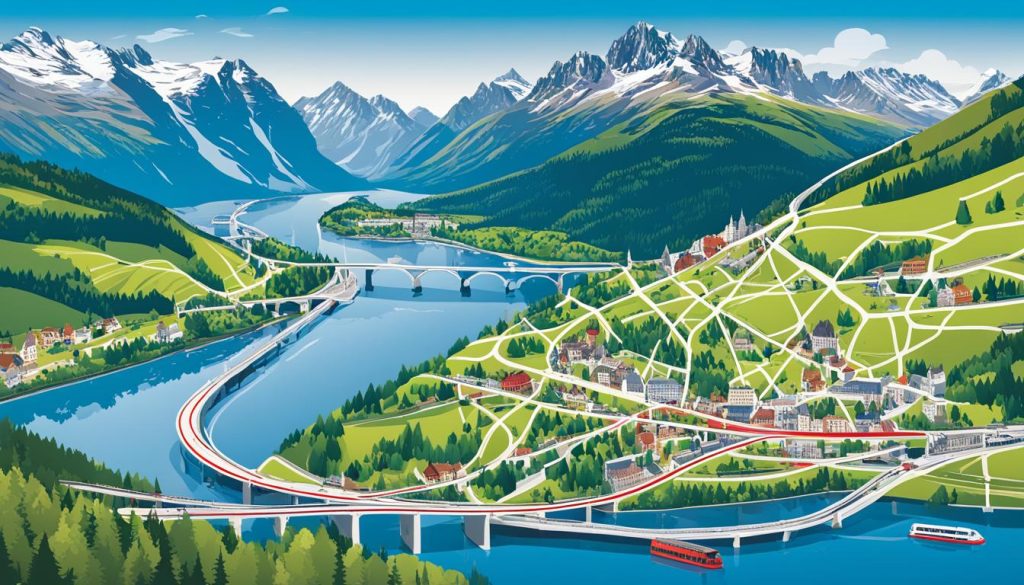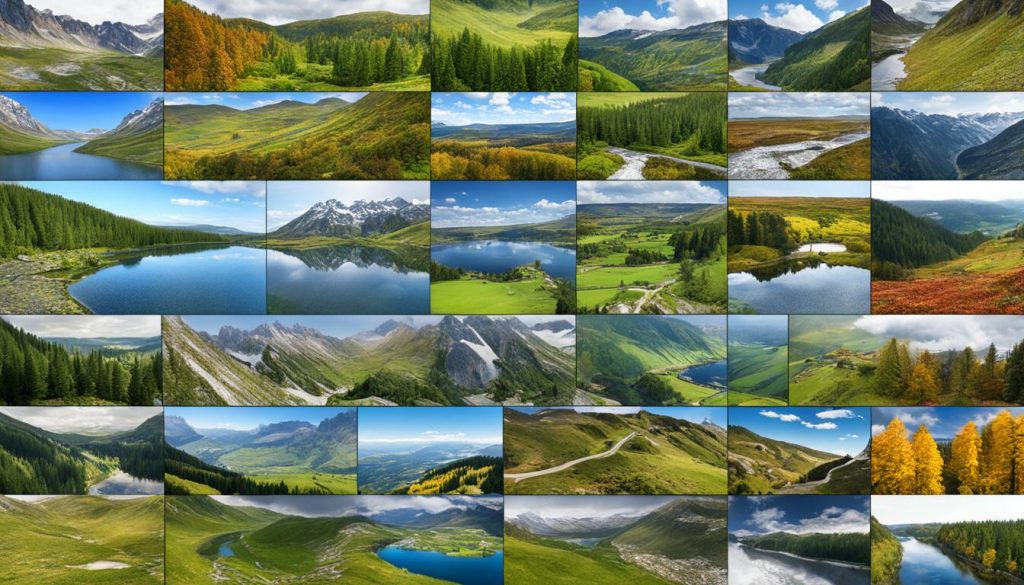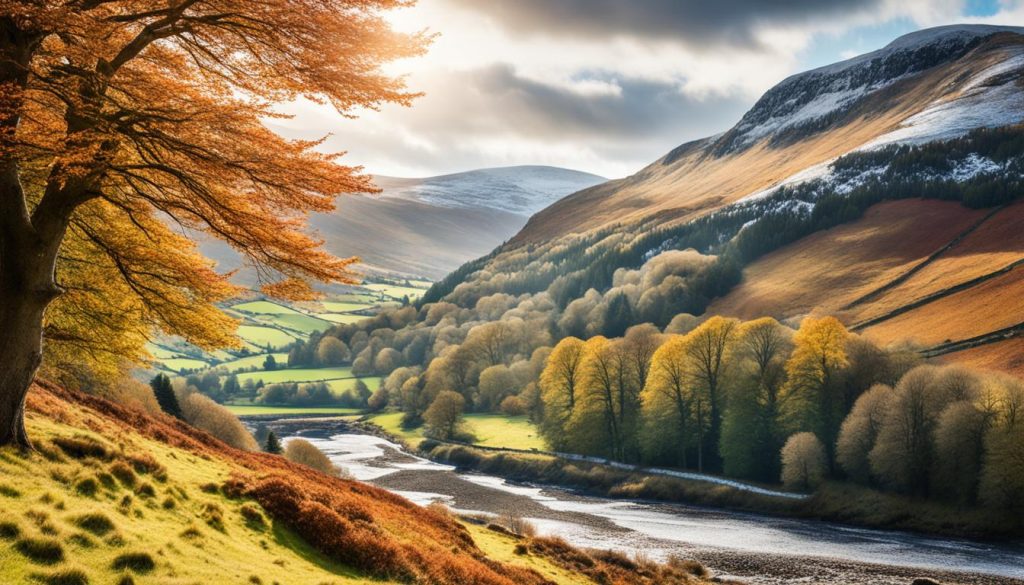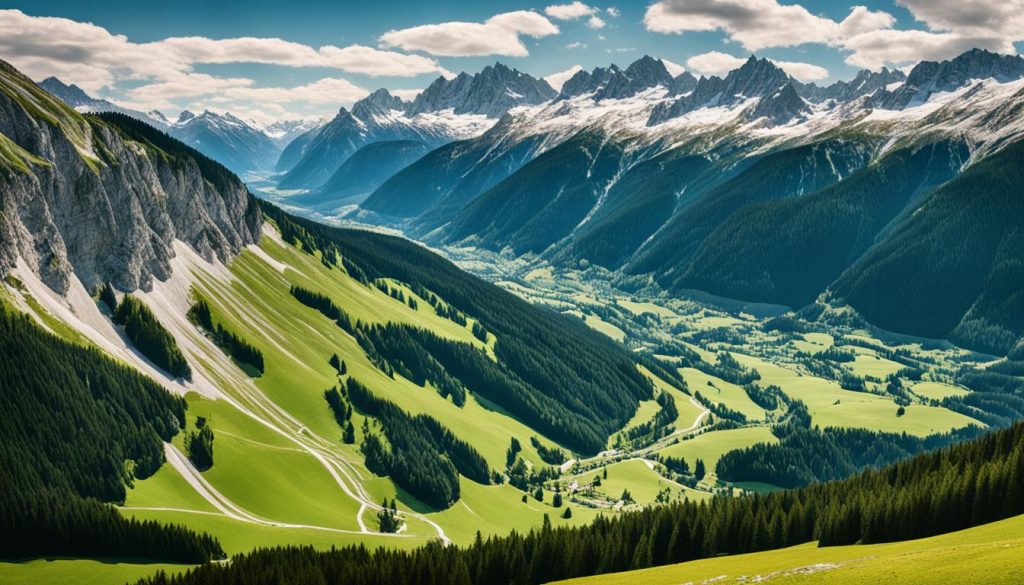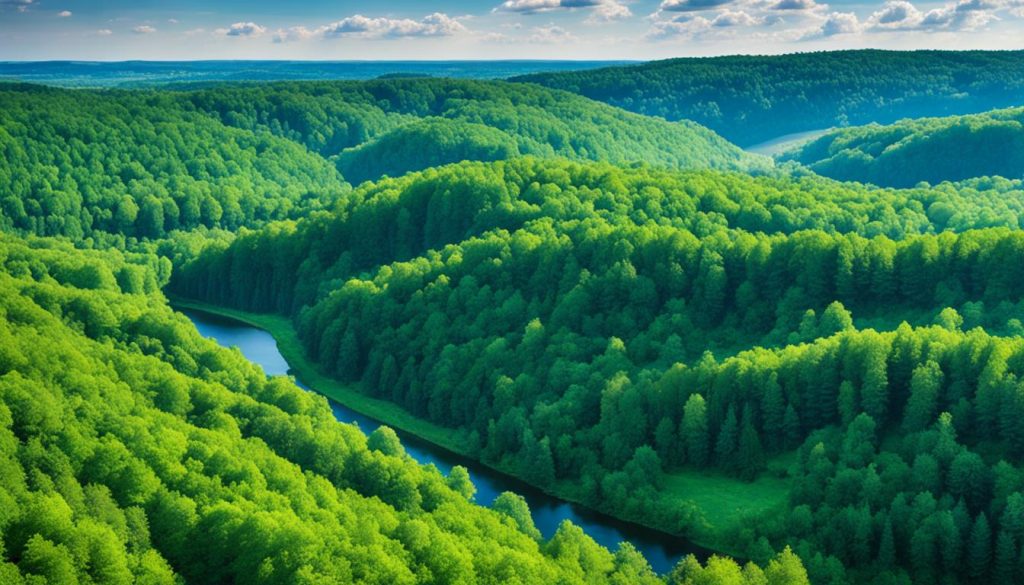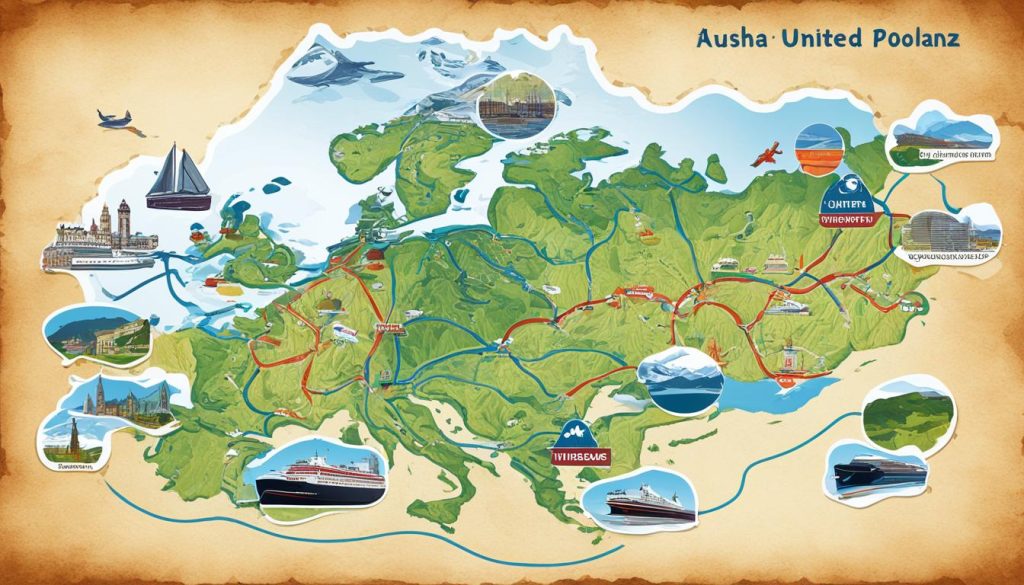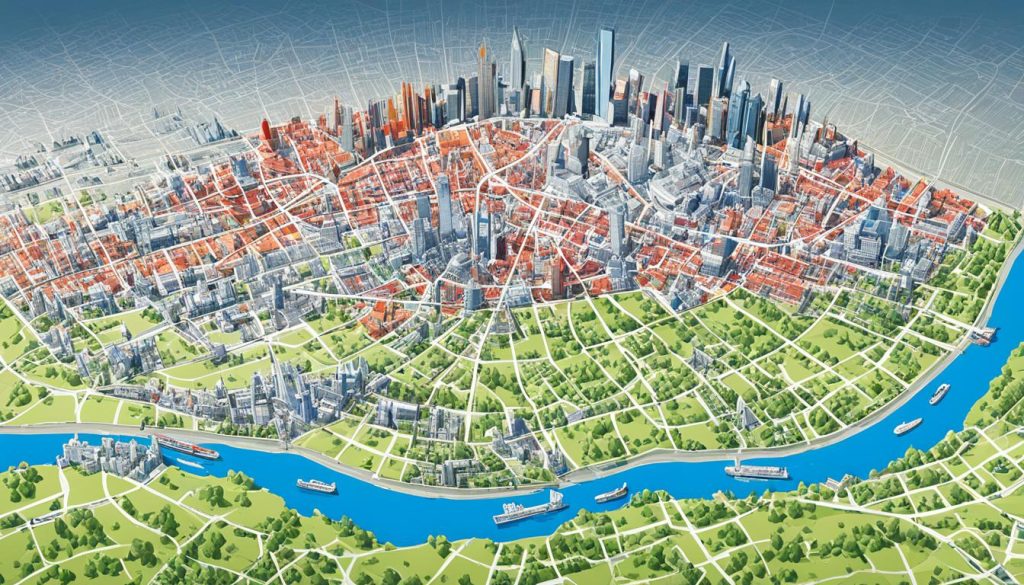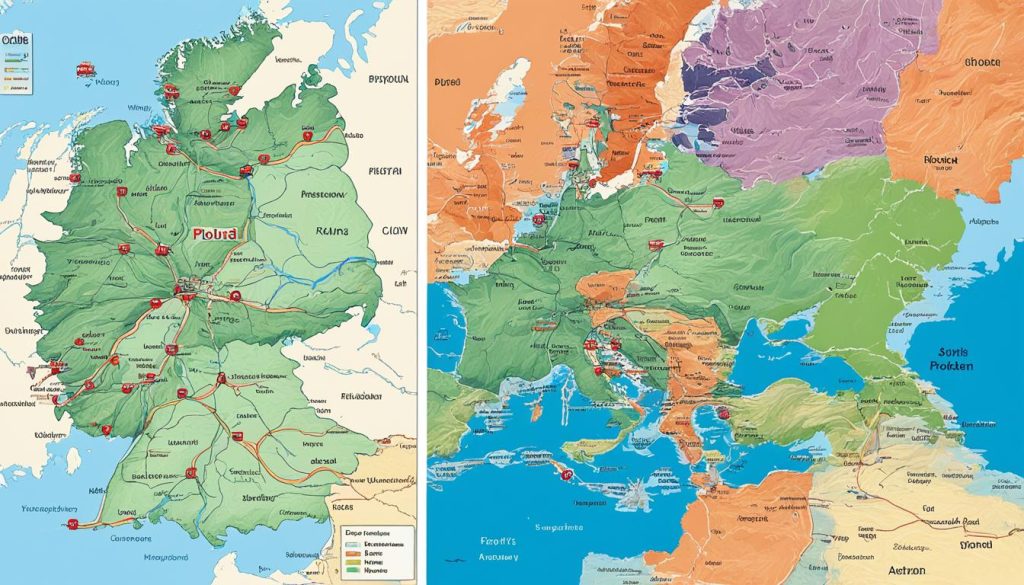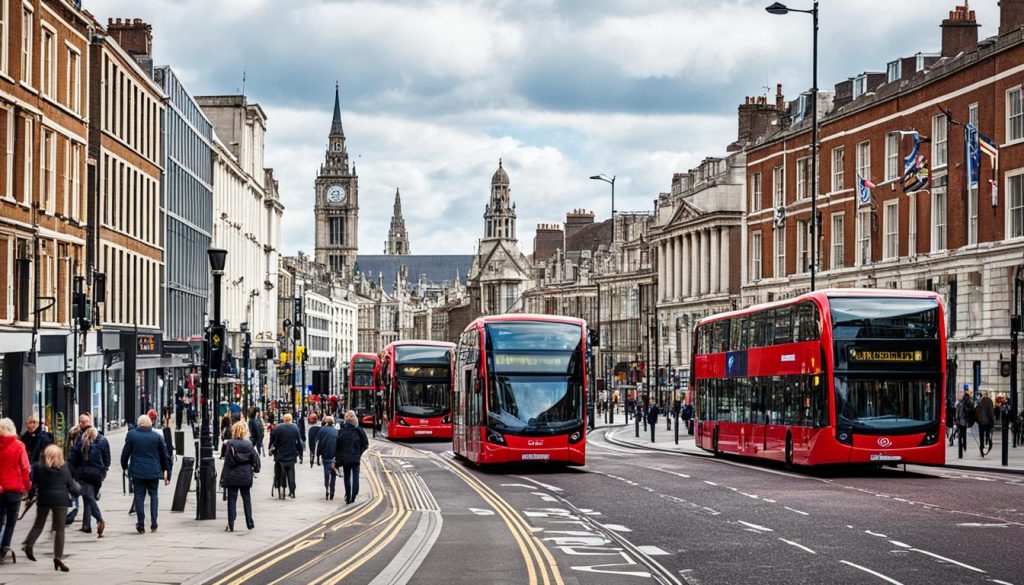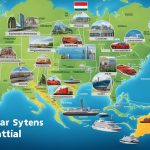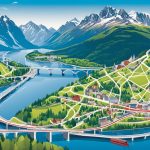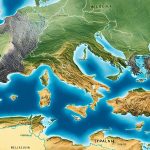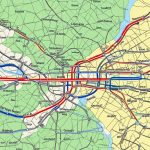Europe is a showcase of geographical variety and advanced infrastructure. The United Kingdom, Austria, and Poland offer fascinating insights for development analysis in European countries. We compare their geographical differences and look into infrastructure comparison. This helps us see how each country has grown differently.
The UK is known for its beautiful hills, Austria for its high Alps, and Poland for its wide plains. Each country’s unique shape has influenced its path. They all blend innovation with their landscapes. We take a closer look at how land, weather, and man-made structures mix. This helps us get the real picture of how countries develop.
Introduction to Geographical Comparison
Exploring the physical geography of European countries reveals a rich scene of landscapes. It ranges from rugged coasts and green plains to high mountains. The UK, Austria, and Poland show the wide variety of European geography. Each has its own story, shaped by nature and human history.
Looking at these countries, the UK’s maritime climate stands out. It’s shaped by its closeness to the sea. This has influenced the UK’s culture and business world in visible ways today.
Austria sits in Europe’s heart, known for its dramatic Alpine landscapes. Its geography has been a shield and an edge, affecting culture and history equally.
Then there’s Poland, with its vast waterways and plains, different from Austria’s mountains. This setting has influenced Poland’s history and its present. The country’s waterways and lands have supported various economic and cultural exchanges.
- Explore the rolling plains and maritime climate of the United Kingdom
- Examine Austria’s Alpine landscapes and their impact on the nation
- Analyse Poland’s waterways and how they’ve shaped historical and current socioeconomic dynamics
The story of each region’s geography is one of human effort, challenges, and adaptation. It shows geography is not just a setting but a force that shapes a nation’s story. Studying these countries’ geography helps us see how our surroundings shape our life and chances.
Physical Geography of United Kingdom
The UK’s geography is a story written by time. It has shaped a unique British climate of moderation and diversity. The country’s position on Earth brings a mix of weather. It crafts diverse natural landscapes. These aspects invite us to explore the UK’s climate and geography closely.
Climate and Natural Landscapes
The British climate gets its character from the North Atlantic Current. It brings temperate weather that changes from sunny to cloudy. This varied weather creates many different landscapes. From rugged hills to calm lowlands, these areas show the UK’s geographical diversity.
Significant Geographical Features
UK’s landmarks tell stories of its diverse terrain. Ben Nevis watches over the land, standing as the highest point. The Scottish Highlands show off the UK’s rugged beauty. They draw in those who love adventure and art.
The coastline connects the UK to different waters. It’s crucial for economic and geographical reasons. This shows the UK’s strong connection with Europe’s seas. Together, these features make the UK’s geography unique and lasting.
Physical Geography of Austria
Austria is famous for being a country without coastlines but filled with mountains. It showcases stunning Alpine lands and diverse weather that make up its beauty. This blend of natural wonders and geographical richness attracts everyone from tourists to scientists.
Alpine Terrain and Climatic Conditions
The Alps in Austria create a landscape filled with high mountains and deep valleys. This rugged land affects the weather across Austria. Expect snowy winters and mild summers in the high areas while valleys enjoy gentler climates.
Water Bodies and Natural Resources
Austria has many rivers and lakes that play crucial roles in its regions. The Danube River, especially, is a key route that connects Austria with other European countries. It helps in trade and boosts Austria’s economy. Besides, its waters are a source of hydroelectric power.
- Forest lands in Austria form a verdant foundation for both the economy and the ecology, as they cover a significant area of the countryside.
- Rich mineral deposits beneath the Austrian soil, including salt and iron ore, are intrinsic to the country’s natural resources.
- The sustainable management of these resources mirrors Austria’s dedication to preserving its geographic wealth for future generations.
Austria works hard to protect and use its natural riches wisely. This shows its commitment to being a keeper of the environment. It also highlights how these resources help in building a stable and wealthy society.
Physical Geography of Poland
Poland’s geography is diverse and beautiful, stretching across the plains of Central Europe. It features everything from the Baltic Sea’s northern coast to the towering Tatra Mountains in the south. This range of natural settings supports a rich mix of plants and animals. It shapes the lifestyle of the Polish people too.
Forests cover more than a quarter of Poland, making it a green haven. These forests are home to various wildlife and are crucial for the country’s forestry sector. They also improve the quality of the air and help regulate the climate. This shows Poland’s commitment to keeping its environment clean and preserved.
- Vast lowlands that sprawl across the central terrain, contributing to Poland’s significant agricultural sector.
- River networks, including the Vistula and the Oder, which serve as important waterways for transport and trade.
- Glacial features such as moraines and lakes that punctuate the northern landscape, remnants of the last Ice Age that shaped Poland’s current topography.
In Poland, the connection to the land is strong. A lot of people work in agriculture, thanks to the varied landscapes. These diverse environments mean fewer people are crowded into cities. Instead, there’s more open space. Poles enjoy a life close to nature. They hold on to their traditional ways while looking after their beautiful country.
Geographic Advantages and Challenges
Exploring how geography affects international trade shows us its power in boosting commerce. The UK, Austria, and Poland use their unique geography to support economic activities. They overcome geographical and climatic challenges to benefit from strategic trade routes.
Topographical Benefits in Trade and Commerce
The UK has a prime location for maritime trade, thanks to its long coastline and proximity to major shipping lanes. This geographical advantage has played a key role in enhancing commerce. Austria, situated in the heart of Europe, acts as a crucial transit hub. It connects several transcontinental corridors.
Poland uses its large land area and farming capabilities to serve European markets. Its position allows for easy access to main land routes, boosting its trade.
Natural Barriers and Climatic Constraints
Geography can also present challenges. Austria’s mountainous Alpine regions make transport difficult, especially in winter. The UK and Poland face issues from high rainfall, affecting logistics and infrastructure. But, by cleverly adjusting their infrastructure, they manage to keep trade flowing and maintain economic stability despite these challenges.
Natural Resources and Land Use
In the UK, Austria, and Poland, how they use natural resources shows their care for the environment. They mix economic needs with caring for nature. They use their resources in a way that protects our planet.
Resource Extraction and Environmental Stewardship
The UK gets oil and gas from the North Sea. They aim to do this with as little harm to the environment as possible. They strive for methods that are better for the planet. Austria and Poland also focus on using their natural resources wisely. Austria’s mining and Poland’s forestry show how they value and protect nature.
Agricultural Practices Across the Nations
In the UK, a large part of the land is used for farming. This shows the UK’s effort to grow food and manage land properly. Poland uses its fertile land to grow a variety of crops. Meanwhile, Austria faces the challenge of farming in the Alps. Each country’s farming practices are shaped by their unique landscapes. This creates a diverse mix of agricultural methods.
Population Distribution and Urbanisation
The complex pattern of demographic spread in Europe Shows clear differences in urbanisation in the UK, Austria, and Poland. Cities like London are very crowded, a sharp difference from the calm Scottish Highlands. This shows how geography deeply influences where people live.
In Austria, cities like Vienna are growing fast amidst beautiful natural scenery. Here, people live close to nature and urban developments. The population gets sparse outside the city, showing how nature and human living spaces meet.
In Poland, the countryside and farmlands spread out more. Even as Warsaw grows like other big cities, many areas in Poland keep a countryside feel. This gives a different way of life compared to city living.
The way people spread out in the UK, Austria, and Poland shows the impact of geography, history, culture, and economy. Each country has its unique pattern of living spaces.
- Urban versus rural areas: Big cities have many people, while countryside areas are less crowded.
- Urban growth changes cities: It makes cities bigger and updates old buildings, affecting how people live.
- The countryside and cities are always changing. Each has its benefits and challenges for the people living there.
As European countries change, so do their living patterns. History, geography, and economies shape these changes, affecting society deeply.
Compare Geography and Infrastructure between United Kingdom, Austria and Poland
The geographical features of the United Kingdom, Austria, and Poland are quite unique. The UK is known for its varied terrains, from the Scottish Highlands to the flat London basin. Austria stands out with its striking Alpine scenery. Poland brings in extensive plains and river valleys, adding variety to Europe’s landscape.
The differences in infrastructure amongst these countries show how geography affects development. The UK’s vast transport system helps people and goods move easily, despite its divided landscapes. This includes trains, planes, and the famous London Underground. Austria uses its infrastructure to navigate the mountains, linking places with engineering wonders.
Poland is catching up, improving its roads and railways to reduce previous gaps. It aims to strengthen both its international and domestic links. This shows Poland’s commitment to boost its economy through better infrastructure.
- The United Kingdom: Well-integrated transport network with a focus on digital connectivity expansion.
- Austria: High-quality transportation influenced by alpine geography, prioritising infrastructural efficiency.
- Poland: Rapid infrastructure development with a strategic eye towards enhancing trade corridors and internal connectivity.
When comparing the UK, Austria, and Poland, it’s not just about now but also the future. The UK benefits from its long history of development. Austria’s focus on quality and Poland’s forward-looking plans suggest a shift towards balance in Europe’s infrastructure scene.
Transportation Infrastructure in the United Kingdom
The United Kingdom is a top example of integrated transport infrastructure. Its transport networks create a mobility web across the country. UK public transport shows off advanced engineering. It highlights the focus on connecting people and places effectively.
Integration of Public Transport Systems
British transport is carefully planned. Buses, trams, and the famous Underground trains work together perfectly. This setup lets people switch smoothly between transport types. It cuts travel time and improves the journey in busy cities.
Challenges and Developments in Rural Connectivity
Urban transport systems work well, but rural areas face challenges. Infrastructure in these areas is improving. Efforts are being made to improve connectivity in less crowded regions. New routes are being built, and more community transport options are being considered. Combining technology with traditional methods is also a focus.
- Expansion of existing rural transport networks to increase the frequency and reliability of services.
- Innovative projects aimed at leveraging technology for on-demand transport services in rural areas.
Efforts to improve rural connectivity show the UK’s commitment to accessible transport for all. This approach aims to balance city transport efficiency with rural travel needs. It is about making sure transportation is a right for everyone, nationwide.
Transportation Infrastructure in Austria
Austria has a vast and efficient transport network. It shows its commitment by updating transit systems and improving connections. Located in Central Europe, Austria uses its position to strengthen ties both inside and outside the country.
The nation’s roads and railways show its focus on being connected. Its transport network is not just big, but also keeps getting better. This is thanks to new technology in transport management. So, Austria stays ahead with smart transport solutions.
- Updated highways make it easy to travel through different landscapes.
- The trains are known for being on time. They cover a wide area, including trips to other countries.
- Rural areas are getting better access to main transport points. This enhances life for both locals and visitors.
Those who visit Austria see how well the transport works. It’s efficient and also cares for the environment. The way Austria manages transport is a model of sustainable movement in Europe.
Transportation Infrastructure in Poland
Poland is currently enhancing its transport facilities, dedicating itself to major Polish infrastructure development strategies. These plans are updating the country’s own systems and integrating it into Europe’s vast network of international corridors.
Upgrades and Expansion Projects
In recent times, Poland has introduced several transport upgrades. This shows Poland’s commitment to improving its logistical operations. Key efforts include making highways wider, electrifying railways, and updating airports. These actions represent a look towards a future where travelling is easy.
International Connectivity and Trade Corridors
Poland’s place on the map makes it a key link between Western and Eastern Europe. Recognising this, the nation is bolstering its role in Poland trade routes. It’s enhancing international corridors to be a crucial trade route. This not only boosts the economy but also brings countries closer together.
- Modernisation of road infrastructure to support increasing traffic loads
- Electrification and upgrading of railway lines to connect with major European routes
- Expansion of airports to increase capacity for passenger and cargo flights
Together, these infrastructure enhancement projects are aimed at improving Poland’s links with other European countries. They keep Poland leading in transport and trade innovations.
Technological Infrastructure: A Comparison
The UK, Austria, and Poland have made big leaps in digital connectivity. These steps forward have improved network coverage greatly. They have also sparked growth in tech, bringing big economic gains and stronger digital basics in these countries.
Telecommunications Networks
The UK, Austria, and Poland have all seen steady telecom growth. They’ve worked hard to improve and grow their telecom networks. By using new tech like fibre optics and 5G, they offer faster internet and better coverage.
Economic Impact of Technological Advancements
Better digital infrastructure boosts the economy. Thanks to strong telecom networks, companies can now innovate and go global more easily. Every kind of business has felt the economic upside of digital progress. Nations focusing on digital infrastructure are setting themselves up to lead globally, drawing in investments and enhancing their economies.
- Expansion of digital connectivity and its role in bridging urban-rural divides.
- Investments in telecommunications improvements as a driver for innovation.
- Enhancing network coverage to support remote education and telemedicine.
- The correlation between tech-driven growth and competitive advantage.
- Evaluating the economic benefits of resilient digital infrastructure.
Healthcare Infrastructure and Services
Healthcare systems play a key role in a nation’s wealth. They help make sure people are healthy through access to good health services. In Europe, countries like the United Kingdom, Austria, and Poland show different ways of improving healthcare and offering medical services.
In the UK, the National Health Service (NHS) is vital for health care. It gives extensive medical services for free when people need them. This lets everyone get medical help easily, but there are issues like waiting times and not enough resources.
Austria, however, uses both public insurance and private healthcare providers. This approach offers a lot of medical facilities and beds for patients. Austria focuses on preventing diseases and promoting health through its strong healthcare infrastructure.
Poland has been making its healthcare better, making it easier for people to get medical help and improving facilities. Still, Poland’s healthcare system is changing. It is working on getting more funding and updating its healthcare infrastructure.
- UK’s NHS: Publicly funded, free at the point of use, with challenges in capacity and funding.
- Austria’s Healthcare Mix: Predominantly public insurance with a notable presence of private healthcare, emphasising preventive care and accessibility.
- Poland’s Evolving System: Infrastructure development with a focus on increasing healthcare access and upgrading facilities.
Looking at these different healthcare systems shows that medical facilities themselves are just one part. What really affects patients’ experiences and health outcomes are the policies and how healthcare is funded.
Evaluating Educational Facilities and Access
Education is key in today’s globally linked economy. It lays the foundation for new ideas and social progress. By examining the educational approaches of the UK, Austria, and Poland, we notice their dedication to making education accessible to all.
United Kingdom’s Educational System
The UK is well-known for its strong educational system. It offers quality education from the early years to famous universities like Oxford and Cambridge. The country aims to make learning accessible to everyone, including students from abroad.
Austria and Poland’s Educational Advances
Austria has made significant efforts to enhance education. It’s investing in schools and making sure education is open to everyone. This shows Austria’s commitment to making a mark on the world through education.
Poland is also pushing forward with educational reforms. By allocating more funds to education, it aims to strengthen its schools. This investment prepares Poland’s future workforce to meet upcoming challenges.
- UK education standards and their global influence
- The drive for schooling accessibility in British academic institutions
- Austrian educational achievements and systemic enhancements
- Poland’s commitment to advancing academic progress and education accessibility
Environmental Policies and Sustainable Development
The UK, Austria, and Poland focus on sustainable energy, highlighting renewable resources’ role. These nations adapt to new conservation strategies. They show the power of working together for the environment, setting an example for global participation.
Energy Generation and Conservation Efforts
The UK pushes forward with wind energy, making the most of its geography. Offshore wind farms are leading the way. Austria relies on hydropower, balancing human needs and nature. Poland moves from coal to solar and wind, cutting carbon emissions.
International Environmental Agreements
Joining global treaties, these countries fight climate change together. They support the Paris Agreement, promoting cooperation. This shows a united front against global warming and tailors policies to each country’s needs.
- The United Kingdom’s strong advocacy for carbon neutrality status echoes its dedication to climate leadership.
- Austria’s steadfast focus on Alpine conservation highlights the importance of preserving natural biodiversity.
- Poland’s efforts in forest management and its transition to greener energy embody a holistic approach to sustainability.
Analysing Housing and Construction Trends
The housing market trends reveal much about socio-economic changes in Europe. Especially in the UK, Austria, and Poland, residential development and construction industry practices show how countries adapt to their citizens’ needs. They strive for economic strength and aim to please their people.
These countries face issues like affordability, sustainability, and innovation. Their residential development sectors illustrate a blend of current issues and future plans. This review digs deep into the housing market trends that guide urban and social policies.
-
Housing options are now more varied, from city flats to suburban houses. This variety meets different people’s needs.
-
Government rules and zoning laws influence the construction industry and housing offered significantly.
-
There is a growing trend in building homes that are kinder to the planet. This matches the world’s eco concerns.
-
New tech in building methods promises more efficiency at lower costs. This is a big leap forward.
-
As our populations grow and age, housing demands and preferences change too.
Housing market trends push leaders and industry pros to be flexible. They aim to build more than homes—they want to create vibrant communities. Quality of life and practical needs are both key.
This analysis shows residential development is complex. Matching housing market trends to community needs requires foresight and teamwork. By focusing on data, community feedback, and new ideas, these nations build stronger, inclusive homes for everyone.
Conclusion: The Impacts of Geography and Infrastructure on Growth and Development
The connection between geography and infrastructure is key for growth in any country. The UK, Austria, and Poland show how different landscapes and wise use of resources support economic and social progress. These places prove geography affects progress and shapes societies.
In these nations, infrastructure tailored to their geography has driven sustainability and progress. The UK uses its coasts and climate to boost trade and cultural exchanges. Austria combines its mountainous terrain with modern transport to showcase natural beauty and innovation. Poland’s fertile lands and forests highlight the importance of geography in feeding the country and protecting nature.
The journey towards development for these countries shows how geography and infrastructure work together. This partnership leads to resilience, innovation, and long-term prosperity. It’s a model for countries wanting to match their geography with infrastructure to secure a sustainable future.

